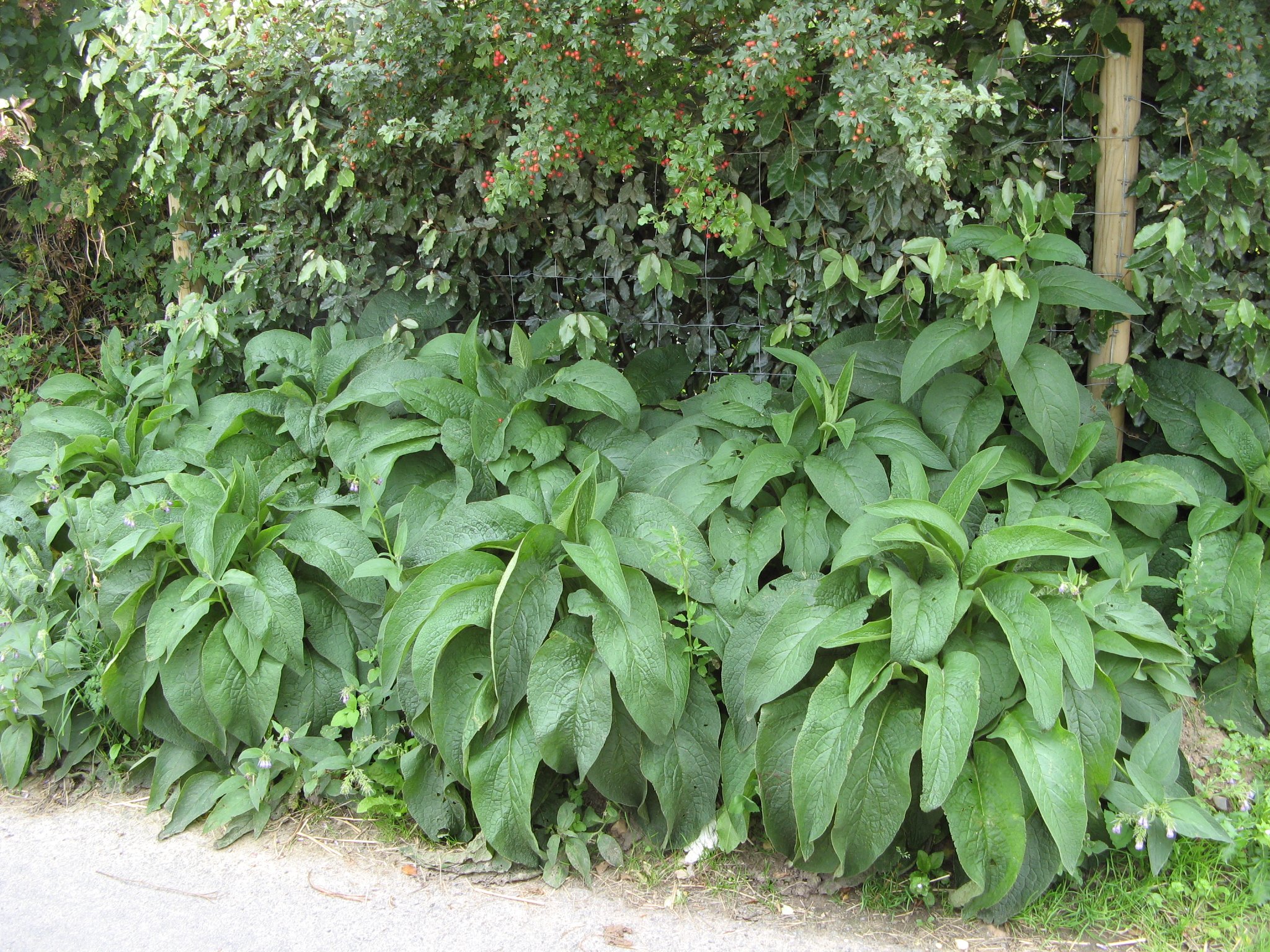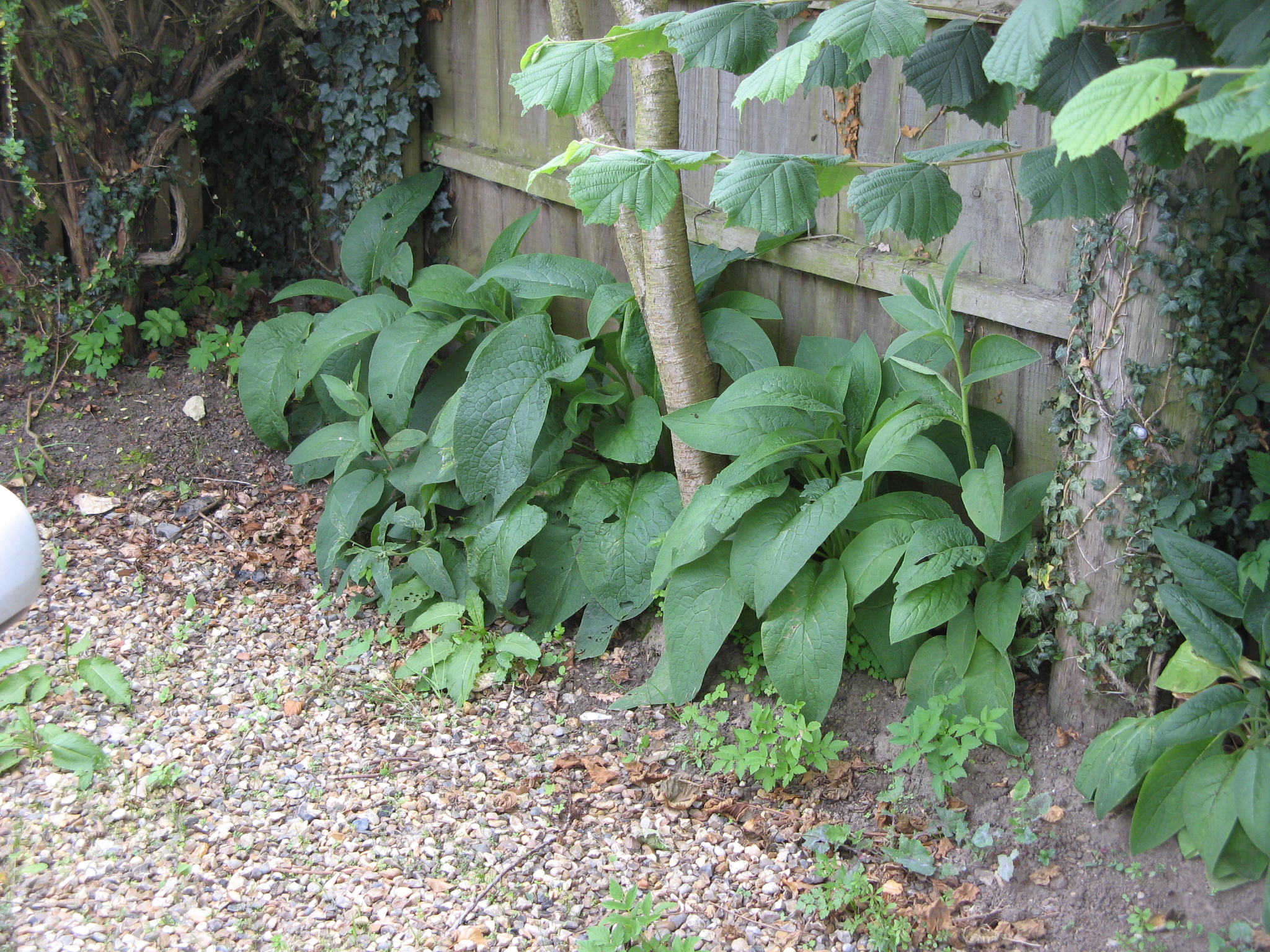This Forum will close on Wednesday 27 March, 2024. Please refer to the announcement on the Discussions page for further detail.
Comfrey - should it not be picked in the first year?
in Fruit & veg
Hi
I planted up some comfrey earlier in the year, mainly from root cuttings and small plants. They've grown into nice strong and healthy looking plants:


I seem to remember reading that it is best not to harvest comfrey in the first year so that the plants and roots get well established. On the other hand, the plants look healthy and I have also read that once you've planted comfrey you'll never get rid of it.
I could do with making some feed.... But I don't want to do the plants any harm....
So should I harvest some or not???
Thanks for all the great help.
Max
PS - the comfrey is Bocking 14.
0
Posts
Shear them down to a few inches and make feed with them. It is nigh on impossible to kill comfrey. You can take several cuts per year off of them.
Thanks fidgetbones. That's exactly what I've read too, with the exception of in the first year when they should be left to establish and build good root systems. But perhaps they've done that already and are therefore prime for a harvest
Or you could leave some of it to flower; the bees will be grateful.
Max, thanks for the link to these pics. So glad to see the comfrey offsets/slips/root-cuttings/small plants have produced such luxuriant growth at your place. It looks like you have been strengthening the root system by taking off the first year's flowers as advised and like the plants have been getting the food they need.
They were organically grown from what I believe was a certified original of the Bocking 14 (it had been originally grown by the tutor on an Organic Horticulture course at our region's agricultural college) so are worth looking after. Being Bocking 14 of course means that they are not likely to spread from seed.
As for spreading, I've always found these particular plants to stay put where I planted them and not to spread beyond. The fact that you mainly had root-cuttings and offsets (the one or two small plants had grown in poor soil from small root-cuttings I'd previously experimented with) means, I believe, that they are clones. (i.e. I don't think they will behave anything like Phillipa's.)
Like josusa I've been tempted to just leave it to flower as it does help bees in that way though a first year aim is mainly to get the plant roots strong. So of course you could compromise and either let flowers develop for the bees, or cut it and make some liquid manure or make great compost or mulch with it this year. (I did that with one bed and although my plants were not rapidly enormous subsequently, it's probably more to do with nutrients in the long run.)
I haven't enough experience to know whether their current growth rate makes them strong enough to give you mature plants by next year as well as to withstand a cut now. I wonder if more experienced organic growers reading this can judge that from their appearance, mindful of the fact they are under a year old. I appreciate that you are being very careful with each precious one!
It looks like they have been closely planted so they may sooner or later compete for nutrients and want more space. Garden Organic say: "Once established, it needs very little maintenance, however to maximise your comfrey crop, extra feeding with manure and compost or grass clippings will all help to produce more leaves. Remove flowering stems in the first season to gain maximum leaf growth next year." ref: gardenorganic.org.uk/comfrey
As fidgetbones says, you would expect to be able to cut them several times a year, once established.
Being experimental and no expert, in my experience as I'm not ruthless enough I've cut some of my plants and let others have their way all in the same bed, thinking that'll keep at least a few bees happy and a few plants happy. Looks to me like the nutrients your plants are getting at present are enough for you to space them out more, so I wonder if you might experiment, dig one out and take a look at how well the root system is doing and make some daughter plants from it if it's well enough developed?
If you have a calamity I'll make you some more cuttings, so you have a back up plan!
As fidgetbones implies, comfrey is fairly robust. I discovered once that someone tried to destroy my comfrey by first mowing it to the ground and trying to burn the plant stumps in situ (apparently). It regenerated. Hooray! (That particular mischief did reduce the ground cover however, as it was so drastic and deprived the roots of many growing points above, so it created a greater weed problem than I would otherwise have had in that bed. Oh, "helpful" neighbours, eh? A lesson in patience.)
I have an area that is partially shaded by overhanging trees and also a bit dry at times. Would Comfrey grow here or does it need full sun? I use a lot of it and collect it from a verge near me. It soon grows up again. I am concerned about the fumes from passing vehicles.
This is what Garden Organic (HDRA) say on their website: Comfrey "will grow on most soil types (except the very shallow and chalky), thriving in good soil in the full sun. If you plant cuttings in spring you will be getting your first leaf harvest before the end of the growing season. Allow 60–90 cm between plants. Once established, it needs very little maintenance, however to maximise your comfrey crop, extra feeding with manure and compost or grass clippings will all help to produce more leaves. Remove flowering stems in the first season to gain maximum leaf growth next year."
My own unscientific experiments have shown to me that the ones which only get sun from the south-west and west are not as big as the ones in full sun; the ones in poorer soil are not as lush and green as the ones in nourished soil; the ones with more space do better.
I was taught that it's better to avoid relying on growing stuff affected by vehicle fumes, if possible.
I have a single flowering (white) comfrey in the garden. I cut it down several times per year and have since I first spotted it. I didn't plant it, I think the birds bought it.
Certainly Bocking 14 is the best if you can get it. If you don't, any other sort will do. Just don't let it flower. I collect comfrey by the sackful from a water meadow by the River Trent. There is a huge swathe of it and I make little impression on the total.
Lawrence Hills published a pamphlet many years ago, he had some of the 35 species of comfrey analysed for nutrients and decided Bocking 14 ( a flowerless russian comfrey ) was the best.
He was one of the founders of the Organic Gardening movement and helped found Ryton gardens. ( Now GardenOrganic. ) He and his wife Cherry had many health problems, and found an organic diet helped in many ways.
Oh dear, I thought I had responded back to this thread but upon checking that doesn't seem to be the case!
Firstly, thanks for such helpful replies and info. HiHat – very nice to hear from you on the forum
To answer a few points raised… In spite of appearances, I didn’t actually remove any flowers. There are a fair few, but some are quite droopy and therefore not readily obvious in the photos. In terms of spacing, I opted for the “minimum requirement” of 2 foot or so between plants. I know they look a bit closer, but I think that’s just testament to their growth rate and the enormous leaves they have put out.
It might sound silly, but I don’t think I could bear to dig one up and see what the roots look like. Not that I’d be able to tell even if I did! But nice idea and thanks for the kind offer of a calamity rescue plan
Villaverde123 – my garden is small, and by the time I had learnt of the wonders of comfrey pretty much every available planting spot was taken up. So I dug op the grass/weed bank at the front of the house and put most of the plants in there. That’s what you can see in the first photo. It’s a north facing bank, and – as you can just about see – there is some oleaster growing above it; and above that an old hawthorn. So it’s north facing AND shady and has still grown really well. I'm no expert but I’d say go for it (base din my experience this year). Oh, and although mine is by the roadside, with live in a very quiet village with little passing traffic.
Fidgetbones – interesting that you say flowerless as my comfrey definitely has flowers…
I'm left with one uncertainty… As autumn kicks in, what do you do with comfrey? Just let it die down naturally? Remove and put it on the compost? Or harvest it as it starts dying down and use it for feed/mulch, etc?
Many thanks
Max